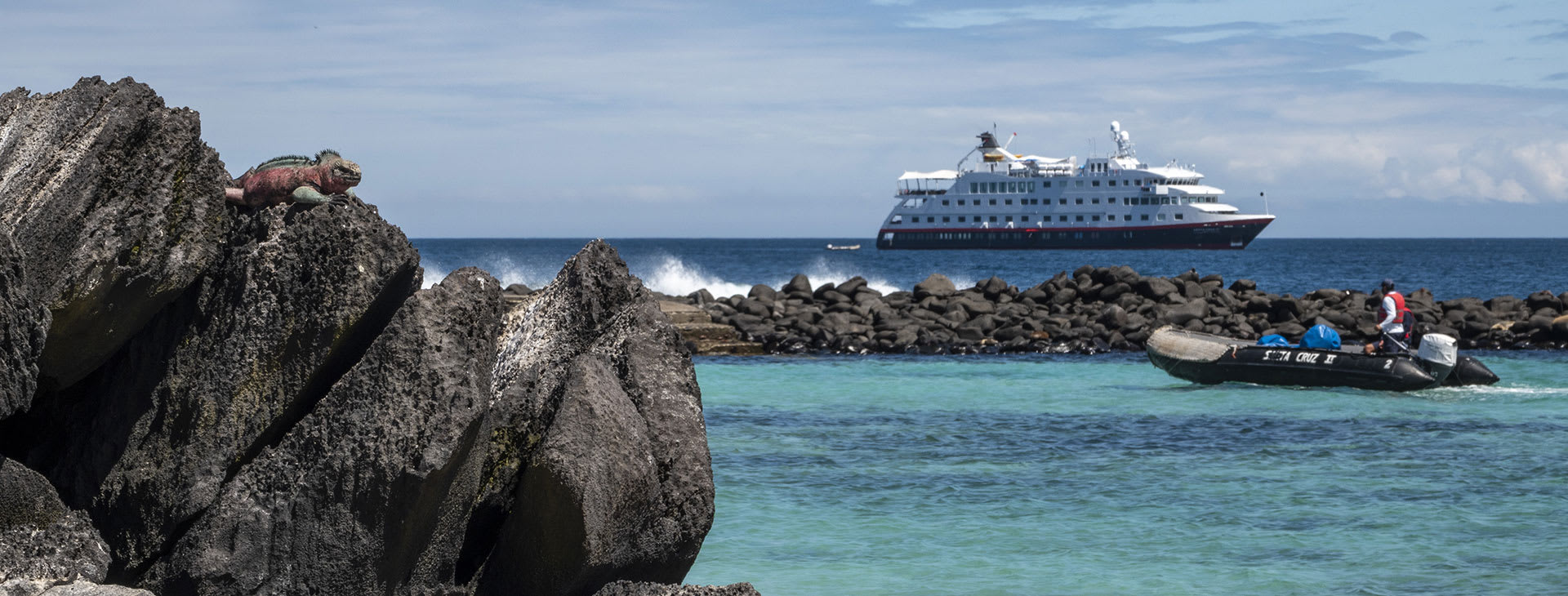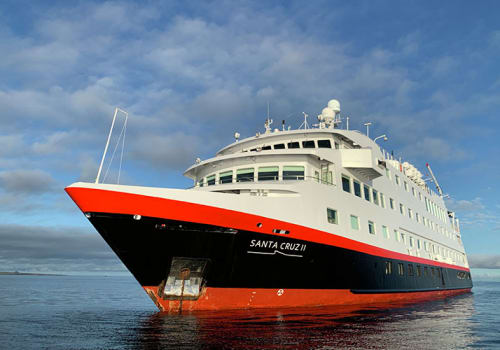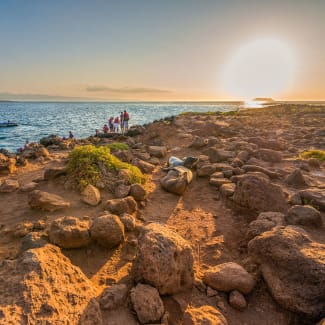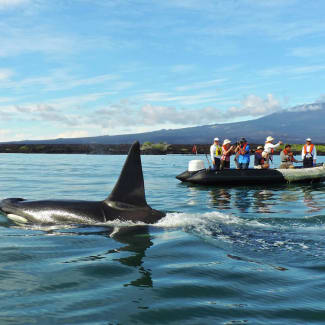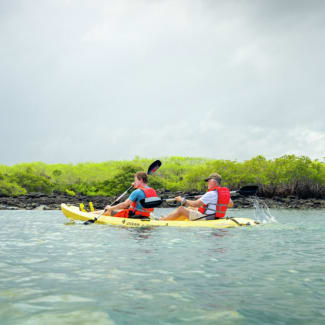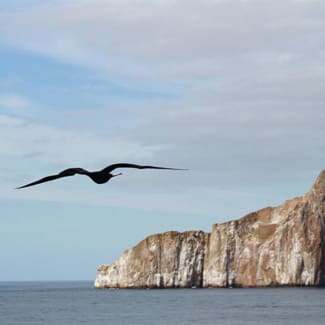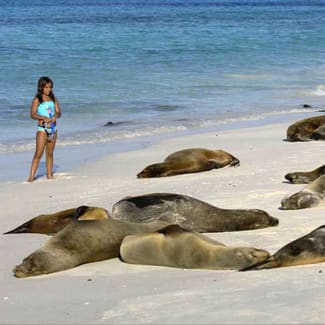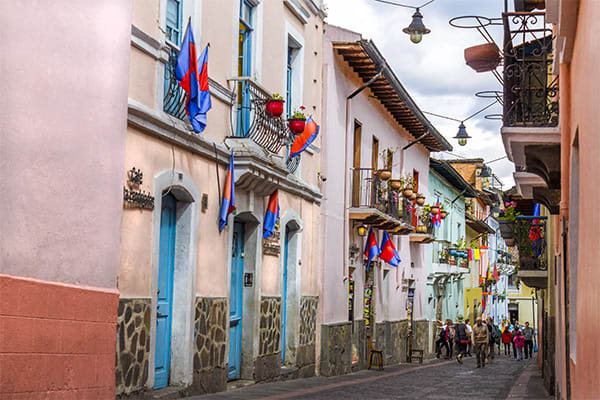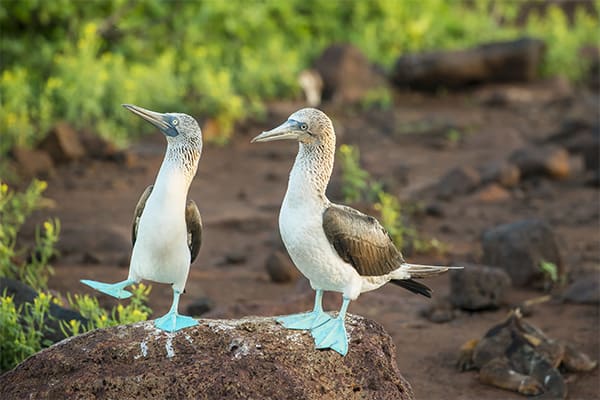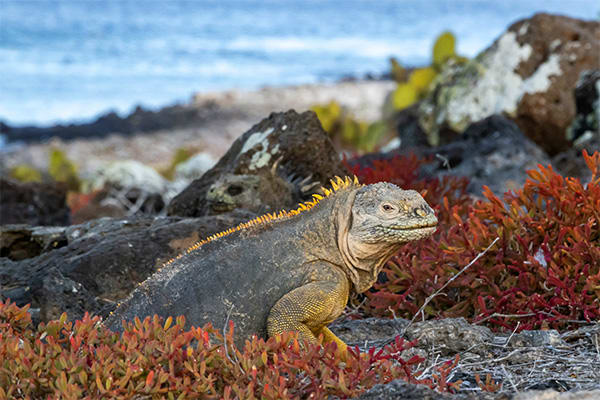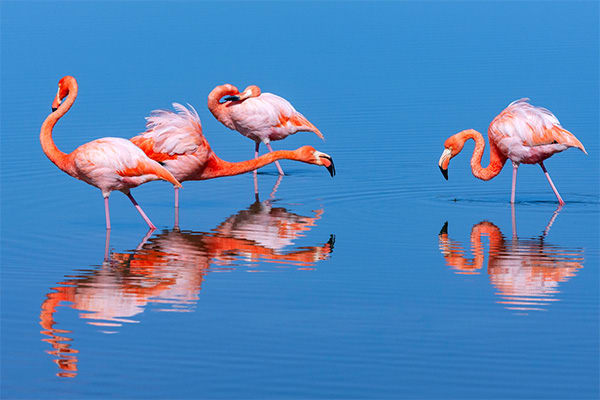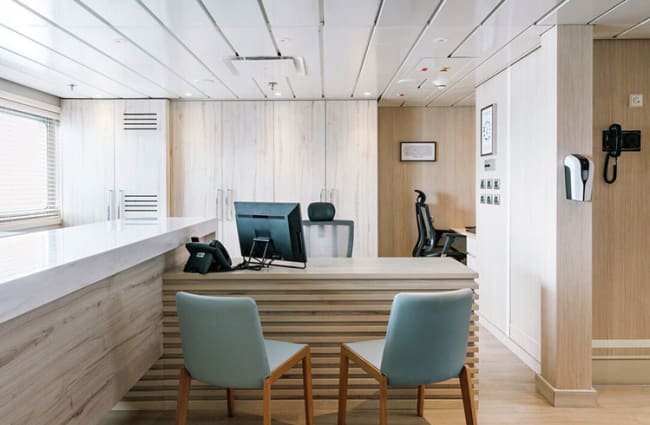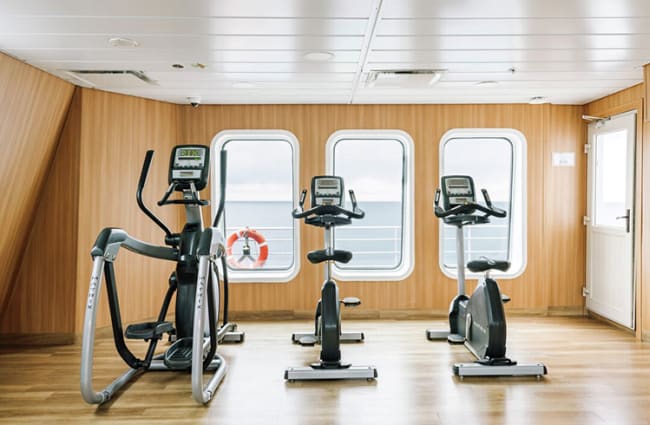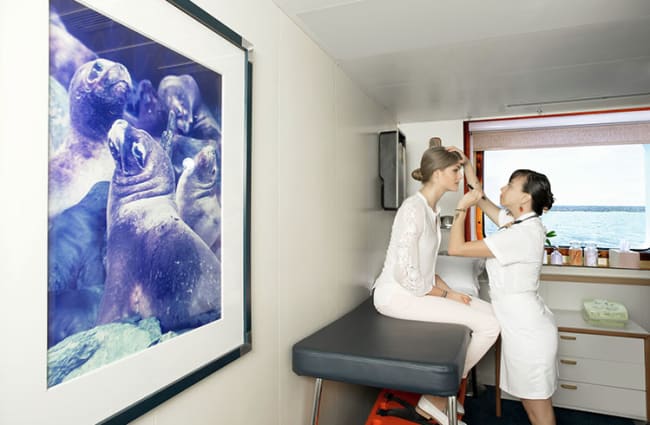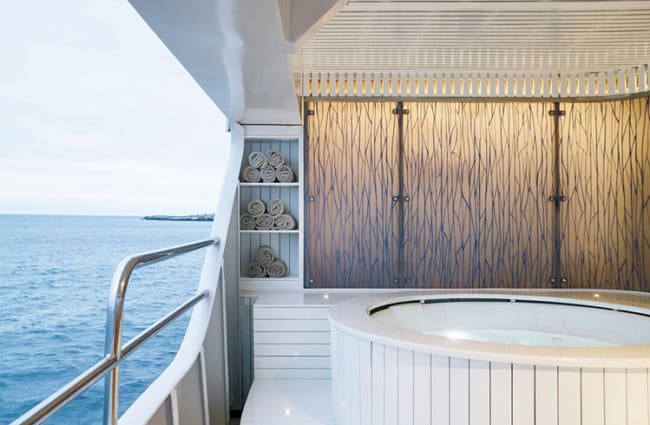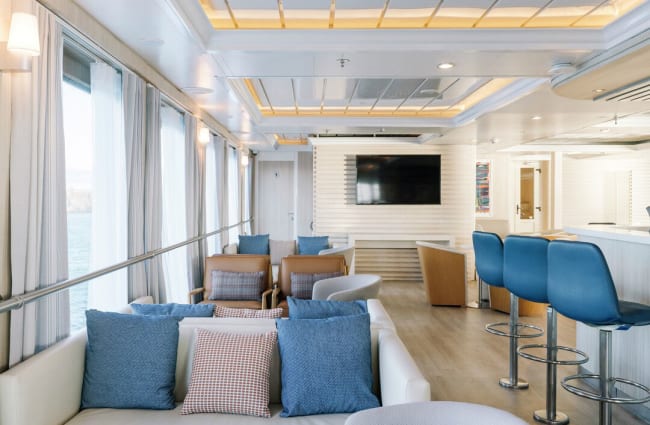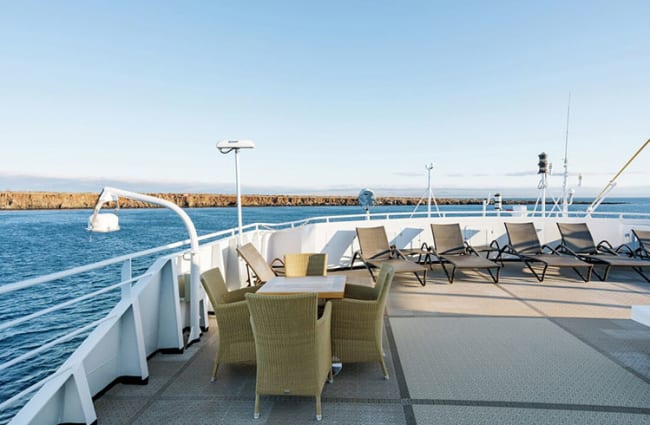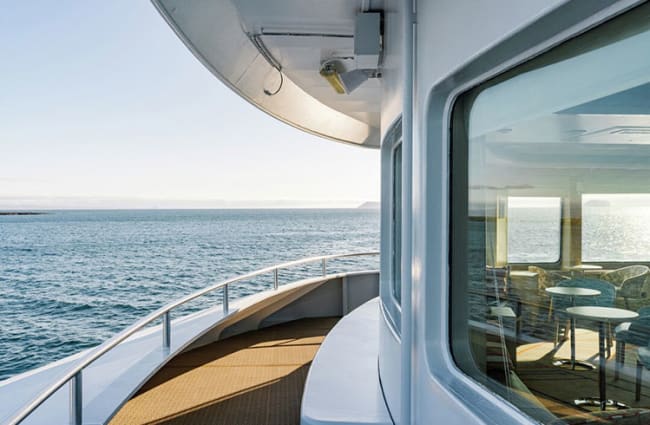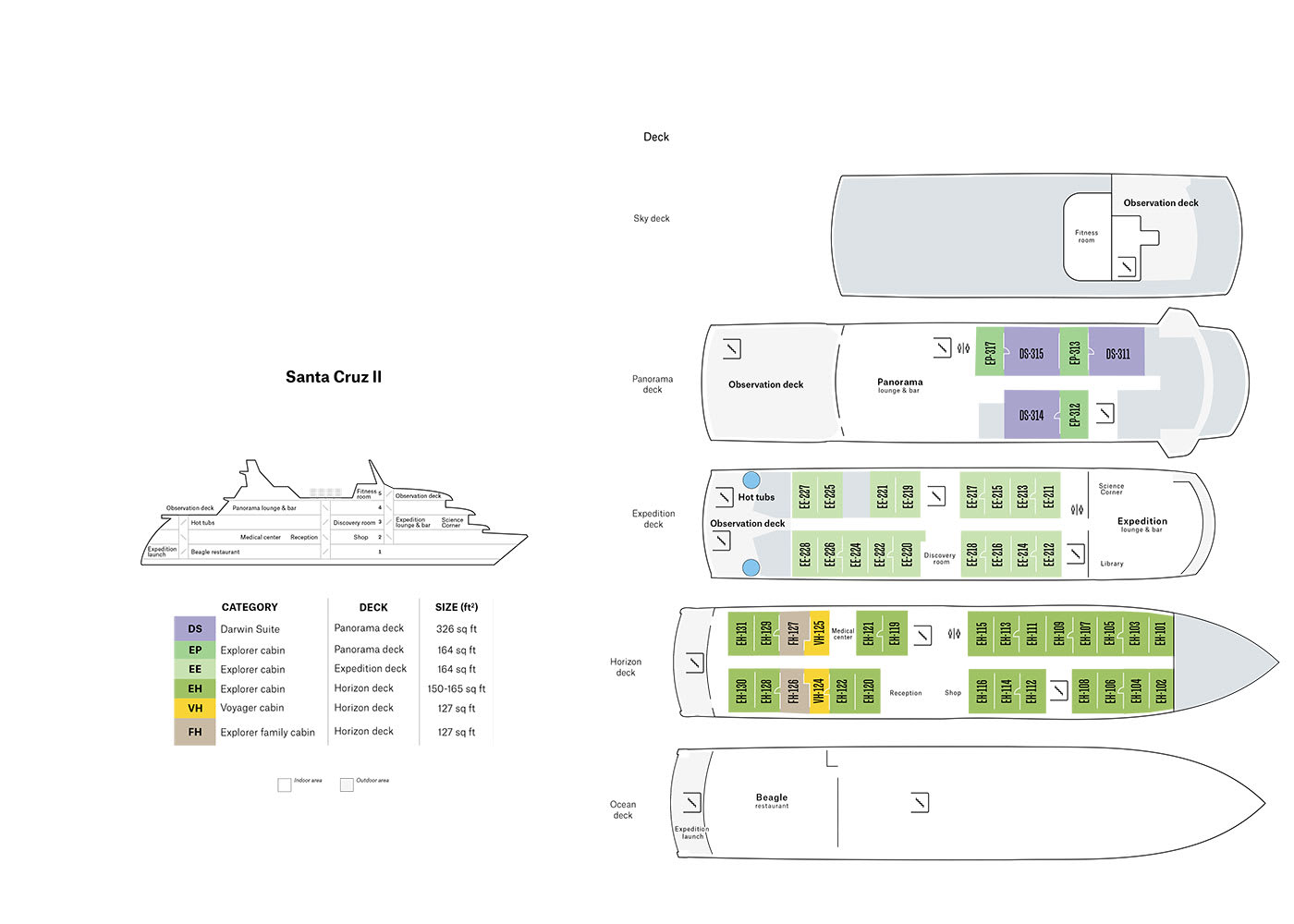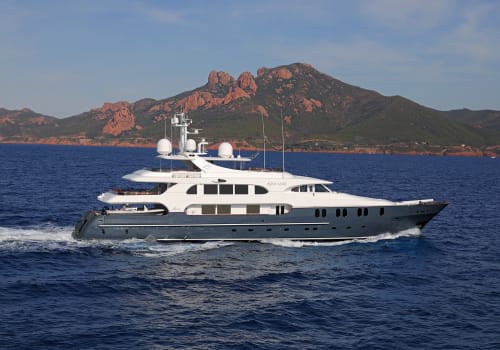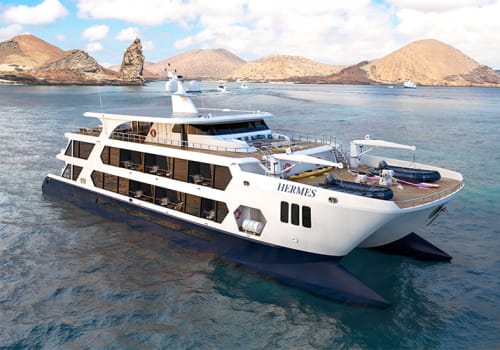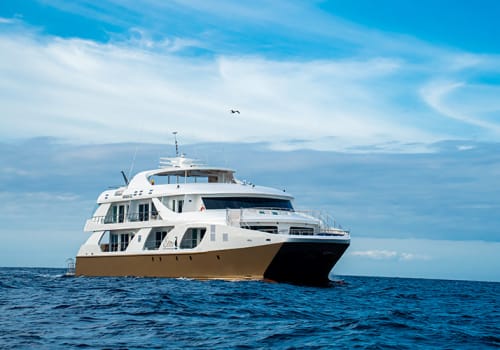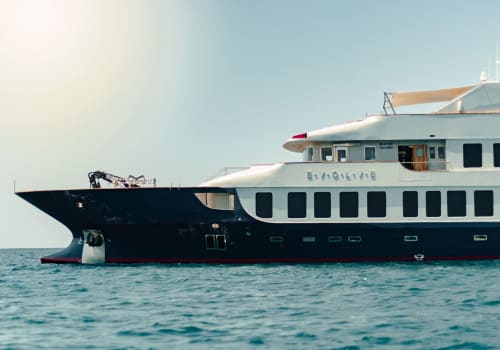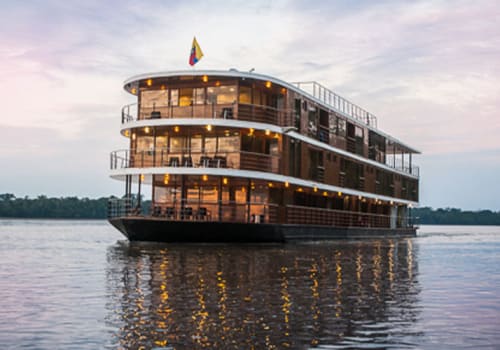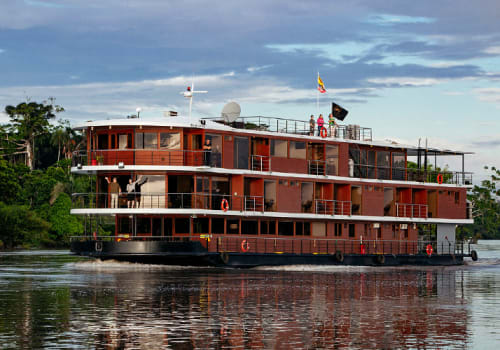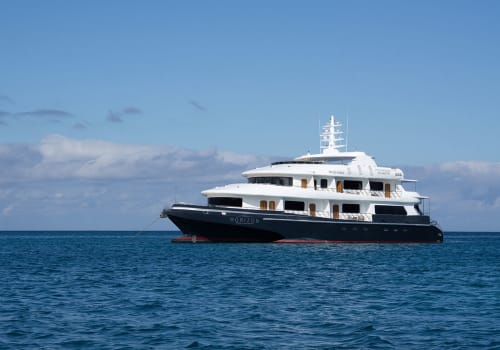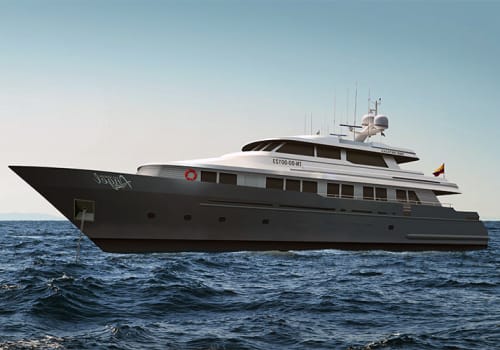Overview
The luxury M/V Santa Cruz II has 50 cabins for 90 guests across five spacious decks, indeed it has one of the highest guest to space ratios in the islands. With gorgeous chic interiors from the distinguished ship designer, Richard Nilsson, this stylish ship has it all: restaurant, indoor and outdoor social areas, hot tubs, a gym, entertainment room … the list is endless.
Life On Board
Picture yourself taking in the beauty of the Galapagos as you sunbathe on Sky Deck or unwind in one of the twin hot tubs on board. Happy Hour anyone? Make your way to the stunning outdoor terrace and adjacent bar & lounge on Panorama Deck. If you’re not there enjoying freshly barbequed snacks, there’s always the Beagle Restaurant to treat your tastebuds to exquisite international and Ecuadorian cuisine from the Cordon Bleu-trained Gastronomy Director.
Fitness your thing? There’s a gym for you. A little bored? Head to the Discovery Room for entertainment. In need of quiet time? The Expedition Deck’s namesake lounge, with its refreshment station and library, is a fantastic chillout zone with spectacular views. Feeling ill? Reassuringly there is an onboard infirmary with resident Medical Officer on call 24/7.
Flexible & Exclusive Excursions
With her 8 expert naturalist guides (including an Expedition Leader to help coordinate activities), her on-shore excursions truly stand out from others, as on overage you will only have 11 guests per guide, much lower than the typical 16 guests per guide you see on other vessels, and with more groups, excursions can also be more tailored to the language, interests, abilities and age of guests, meaning a more intimate and rewarding learning experience for all.
What’s more, 99% of the visitor sites you explore won’t be shared with any other vessel, so you will be able to discover the islands much the same way Darwin himself did, with no other boats in sight. The ship has all the facilities you’d expect for aquatic activities like kayaks, masks, fins and snorkels (wetsuits are available for hire), but additionally guests have the great option to use the glass-bottom boat, ideal if you are tired or not too fond of snorkeling.
Family Favorite
The vessel is rightly popular with families, and not just because of the tailored excursions or numerous interconnectable and dedicated family cabins on board. The Santa Cruz II offers a “Pirates Aboard” kit with multiple activities for younger children as well as snorkeling lessons and panga rides designed for young adventurers. Parents and kids alike will appreciate the kid-sized meals served on a kids’ friendly schedule.
Whether you are a family, large group, couple or a solo traveler, with a variety of cabin options to choose from – there are single, double and family cabins available, many of which can be interconnected – the flexible and fun Santa Cruz II is a remarkable vessel with an excellent crew committed to making your Galapagos experience extraordinary.
Itineraries & Prices
All itineraries are subject to change due to seasonal weather conditions (and resultant variations in river and tributary water levels) affecting accessibility to locations. Thus navigation routes, times and excursions may need to be modified at the cruise captain’s or your guide's discretion.
Accommodations
Social Areas
Suites & Cabins



Explorer Cabin - Horizon Deck
The Explorer Cabins can be found on Horizon, Expedition and Panorama Decks, but are all the same size. With large windows and comfortable space, these cabins are offering elegant areas to rest and relax after a day exploring.



Explorer Cabin - Expedition Deck
The Explorer Cabins can be found on Horizon, Expedition and Panorama Decks, but are all the same size. With large windows and comfortable space, these cabins are offering elegant areas to rest and relax after a day exploring.



Explorer Cabin - Panorama Deck
The Explorer Cabins can be found on Horizon, Expedition and Panorama Decks, but are all the same size. With large windows and comfortable space, these cabins are offering elegant areas to rest and relax after a day exploring.



Explorer Family - Horizon Deck
The Explorer Family Cabin can be found on Horizon Deck. With large windows and comfortable space, these cabins are offering elegant areas to rest and relax after a day exploring. Cabins featured twin beds and a sofa bed (ideal for children under 12.)



Darwin Suite - Panorama Deck
The Darwin Suites offer an exceptional standard of accommodation on Panorama Deck, in close proximity to the Bar & Lounge and Outdoor Terrace. Available with a twin or double bed, and if more space is desired, these suites can be interconnected with an Explorer cabin.

